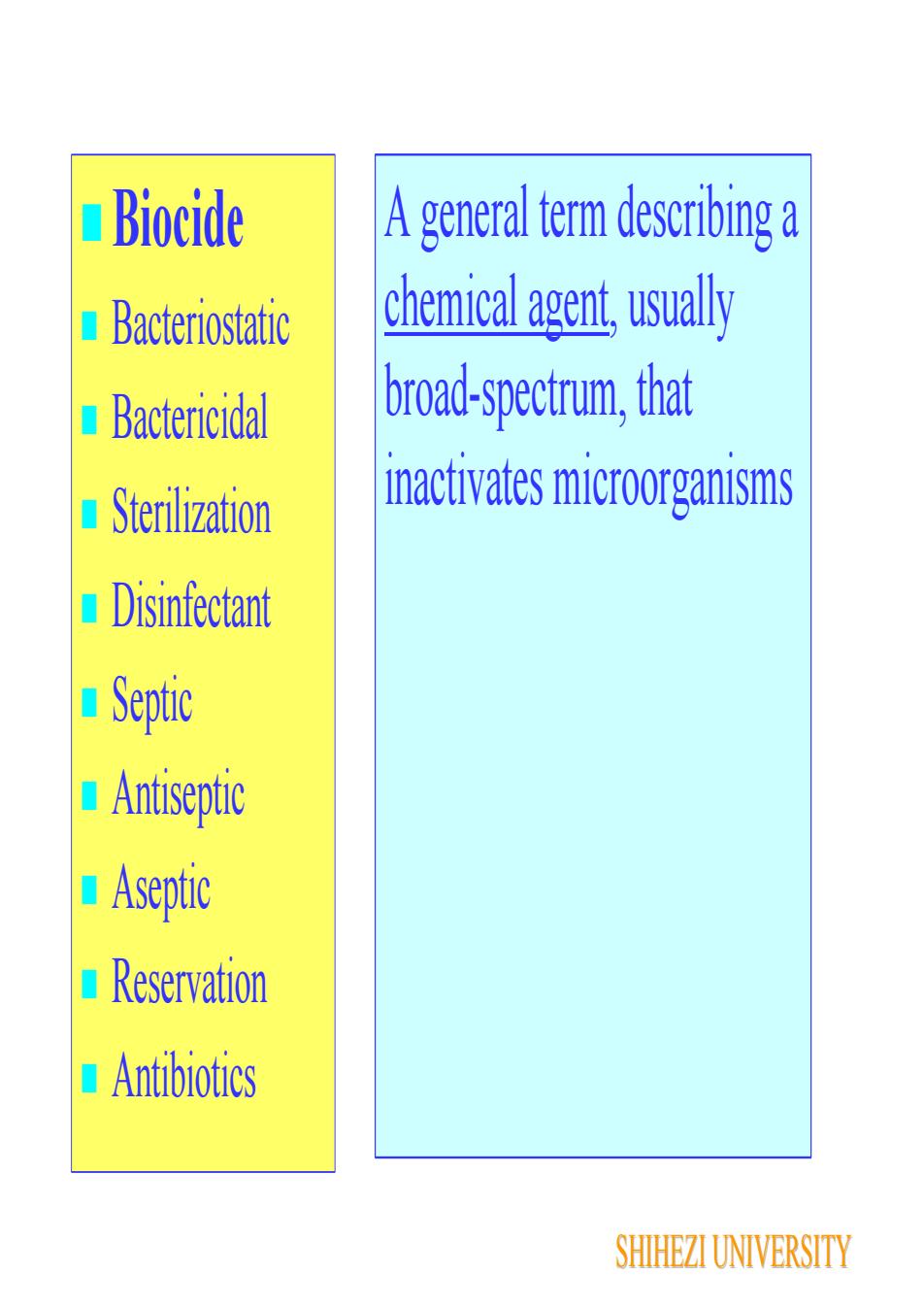
BiocideA general term describing achemical agent, usually Bacteriostaticbroad-spectrum, thatBactericidalinactivates microorganisms SterilizationDisinfectantSepticAntisepticAsepticReservationAntibioticsSHIHEZI UNIVERSITY
Biocide Bacteriostatic Bactericidal Sterilization Disinfectant Septic Antiseptic Aseptic Reservation Antibiotics A general term describing a chemical agent, usually broad-spectrum, that inactivates microorganisms SHIHEZI UNIVERSITY
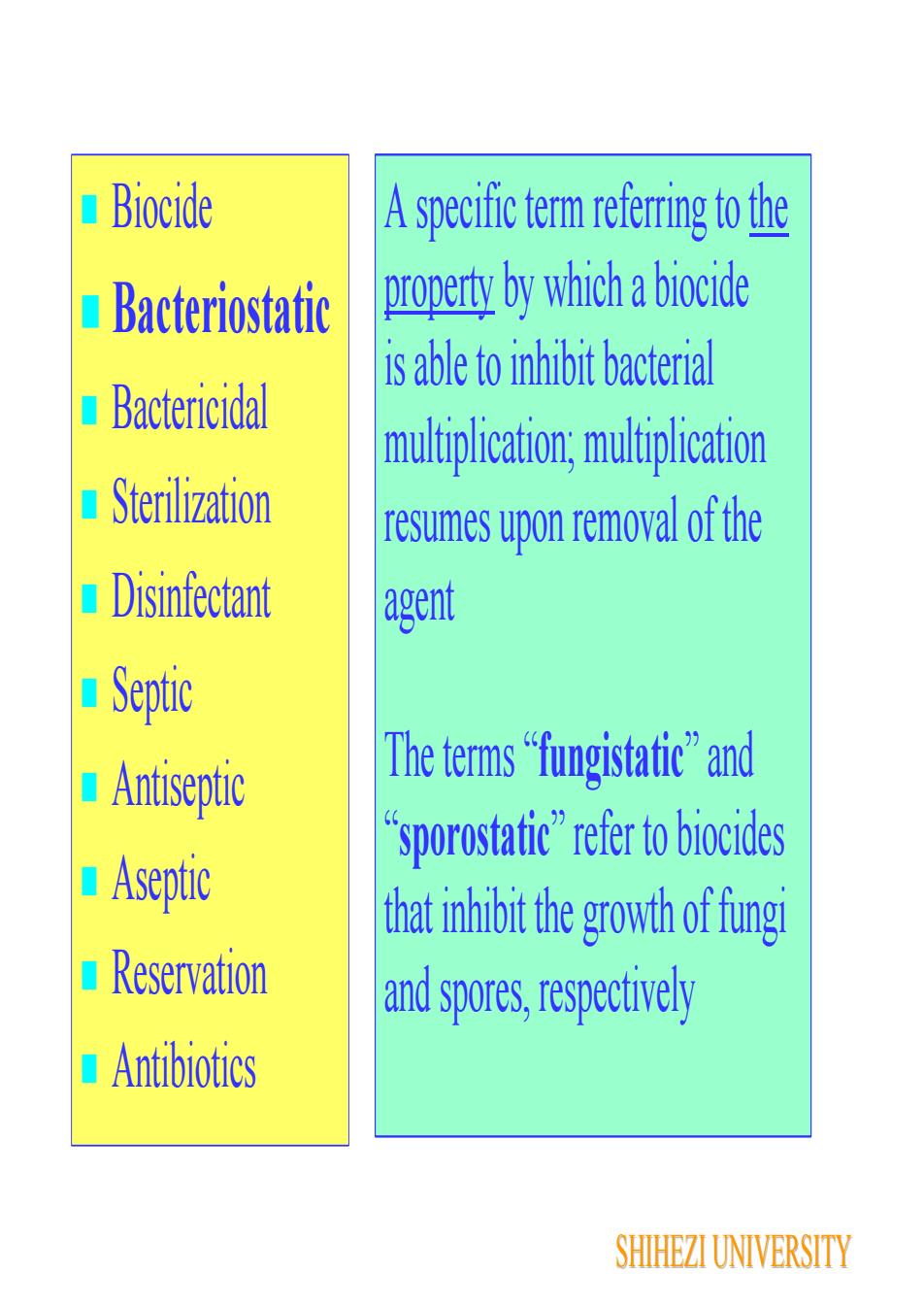
BiocideA specific term referring to theproperty by which a biocideBacteriostaticis able to inhibit bacterialBactericidalmultiplication; multiplicationSterilizationresumes upon removal of theDisinfectantagentSepticThe terms“fungistatic” andAntisepticsporostatic” refer to biocidesAsepticthat inhibit the growth of fungiReservationand spores, respectivelyAntibioticsSHIHEZI UNIVERSITY
Biocide Bacteriostatic Bactericidal Sterilization Disinfectant Septic Antiseptic Aseptic Reservation Antibiotics A specific term referring to the property by which a biocide is able to inhibit bacterial multiplication; multiplication resumes upon removal of the agent The terms “fungistatic”and “sporostatic”refer to biocides that inhibit the growth of fungi and spores, respectively SHIHEZI UNIVERSITY
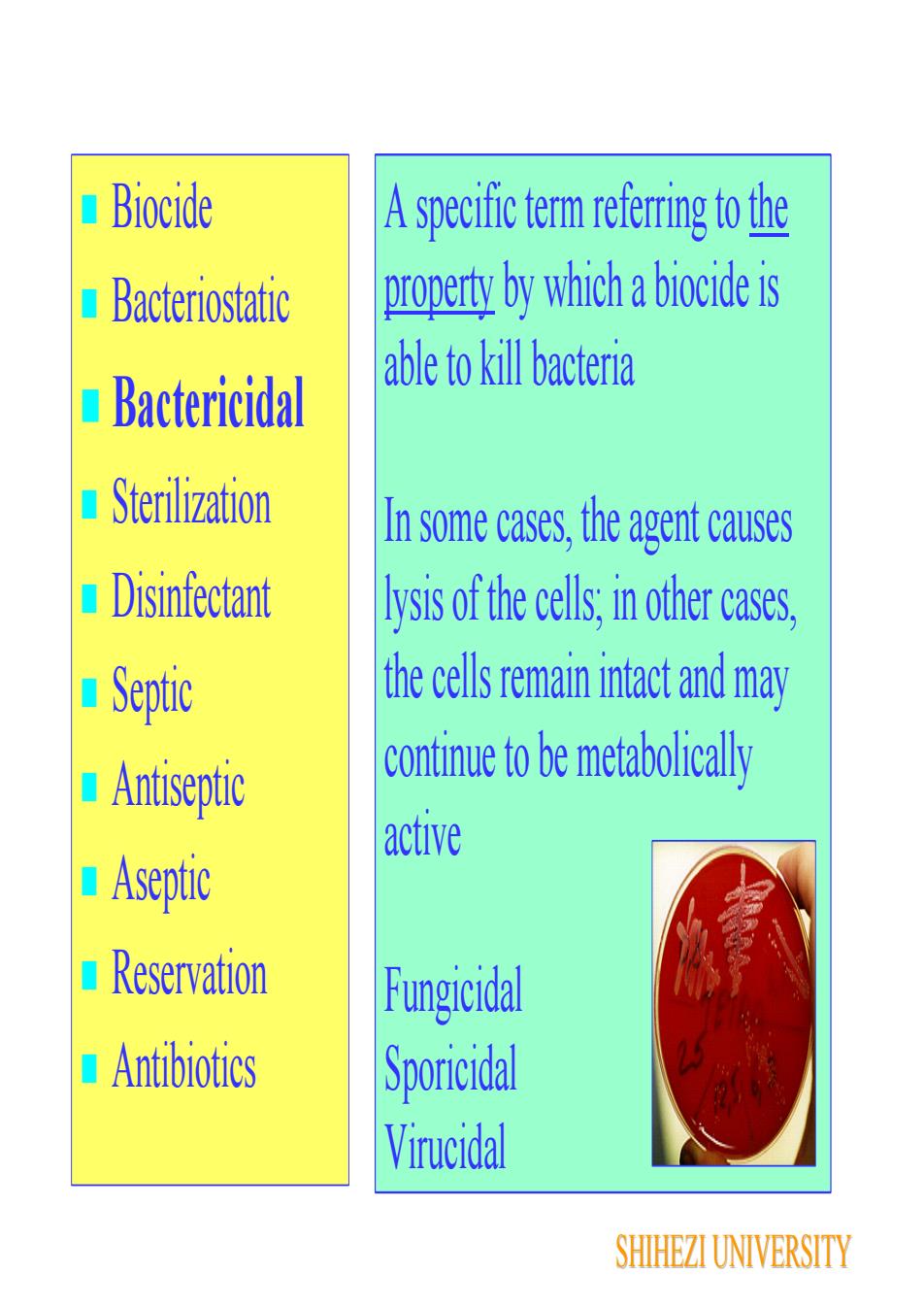
BiocideA specific term referring to theproperty by which a biocide isBacteriostaticable to ill bacteriaBactericidalSterilizationIn some cases, the agent causesDisinfectantlysis of the cells in other cases.the cells remain intact and maySepticcontinue to be metabolicallyAntisepticactiveAsepticReservationFungicidalAntibioticsSporicidalVirucidalSHIHEZI UNIVERSITY
Biocide Bacteriostatic Bactericidal Sterilization Disinfectant Septic Antiseptic Aseptic Reservation Antibiotics A specific term referring to the property by which a biocide is able to kill bacteria In some cases, the agent causes lysis of the cells; in other cases, the cells remain intact and may continue to be metabolically active Fungicidal Sporicidal Virucidal SHIHEZI UNIVERSITY
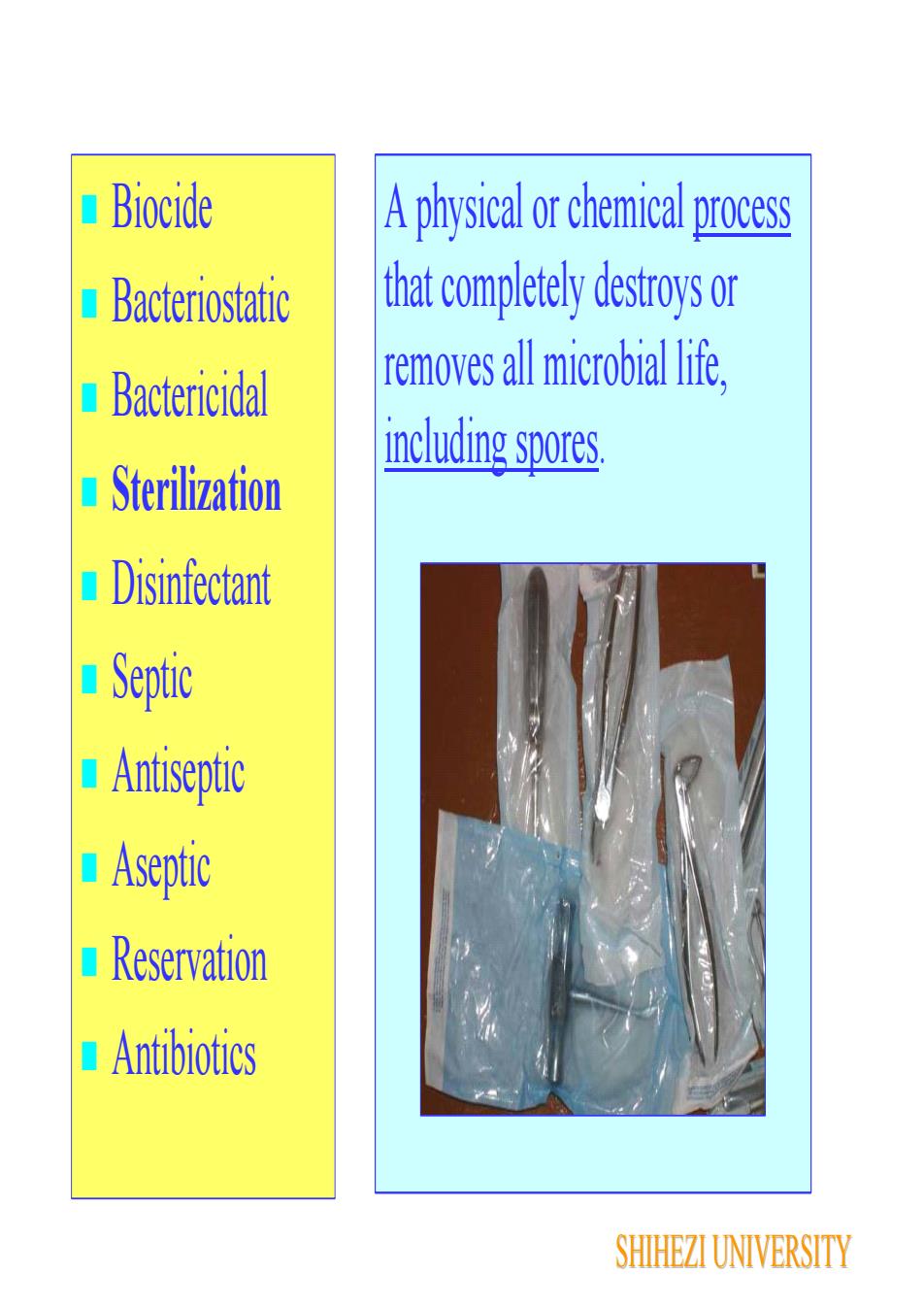
BiocideA physical or chemical processthat completely destroys orBacteriostaticremoves all microbial lifeBactericidalincluding spores.SterilizationDisinfectantSepticAntiseptic AsepticReservationAntibioticsSHIHEZI UNIVERSITY
Biocide Bacteriostatic Bactericidal Sterilization Disinfectant Septic Antiseptic Aseptic Reservation Antibiotics A physical or chemical process that completely destroys or removes all microbial life, including spores. SHIHEZI UNIVERSITY
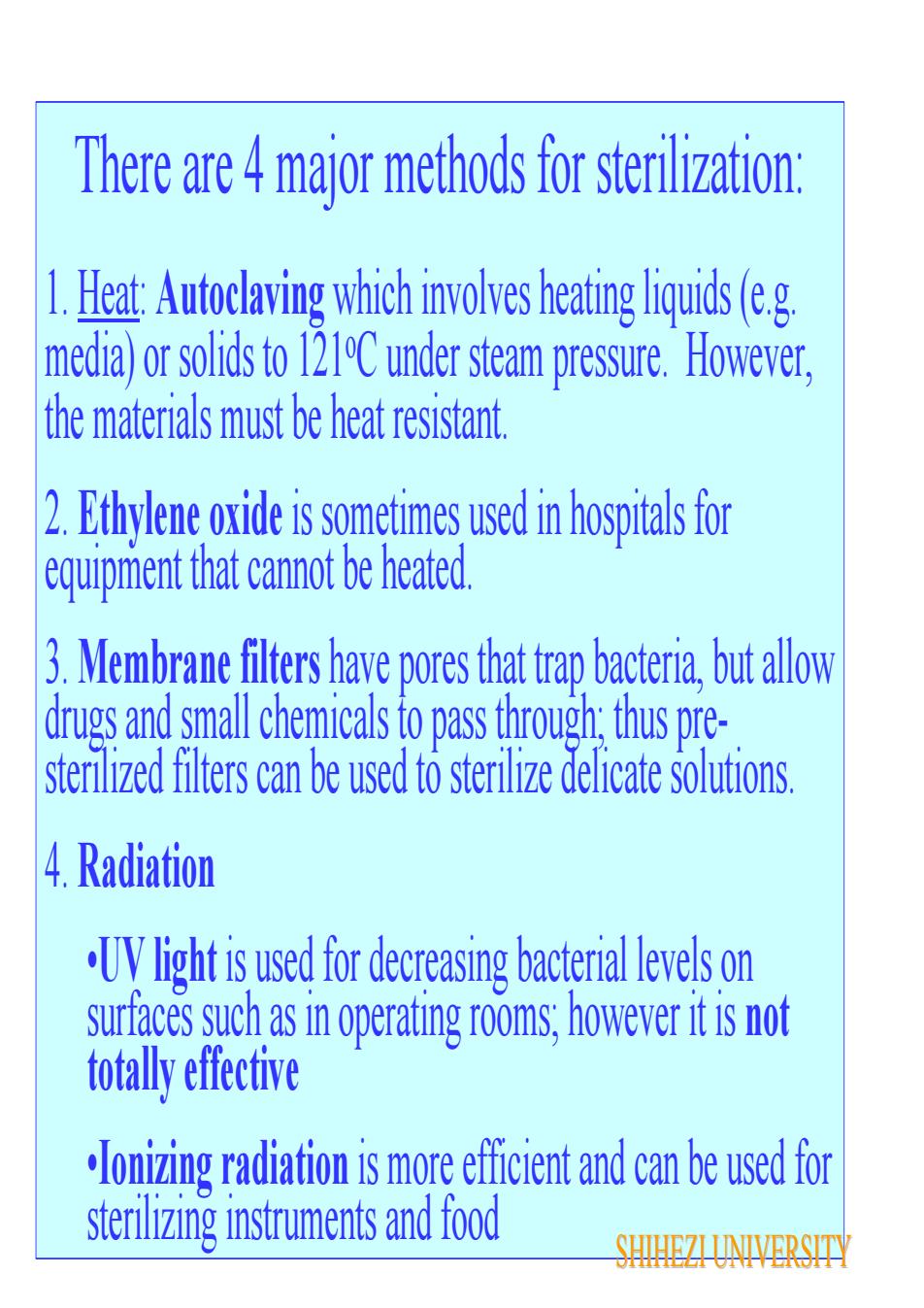
There are 4 major methods for sterilization:1. Heat: Autoclaving which involves heating liquids (e.gmedia) or solids to 121°C under steam pressure. However,the materials must be heat resistant2. Ethylene oxide is sometimes used in hospitals forequipment that cannot be heated3. Membrane filters have pores that trap bacteria. but allowdrugs and small chemicals to pass through: thus pre-sterilized filters can be used to sterilize delicate solutions4. Radiation·UV light is used for decreasing bacterial levels onsurfaces such as in operating rooms; however it is nottotally effectivelonizing radiation is more efficient and can be used forsterilizing instruments and foodSHIHEZIUNIVERSITY
There are 4 major methods for sterilization: 1. Heat: Autoclaving which involves heating liquids (e.g. media) or solids to 121oC under steam pressure. However, the materials must be heat resistant. 2. Ethylene oxide is sometimes used in hospitals for equipment that cannot be heated. 3. Membrane filters have pores that trap bacteria, but allow drugs and small chemicals to pass through; thus pre- sterilized filters can be used to sterilize delicate solutions. 4. Radiation •UV light is used for decreasing bacterial levels on surfaces such as in operating rooms; however it is not totally effective •Ionizing radiation is more efficient and can be used for sterilizing instruments and food SHIHEZI UNIVERSITY